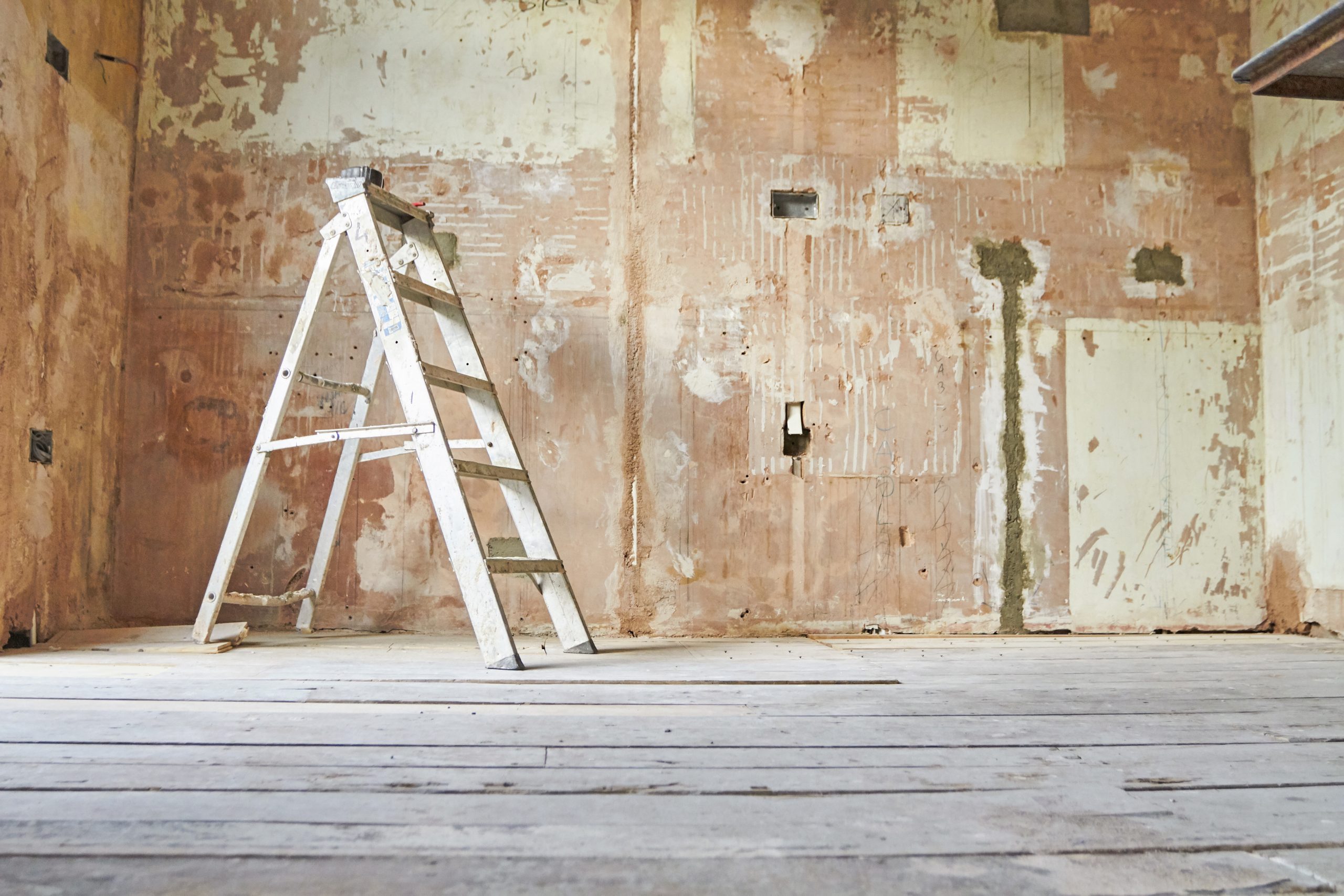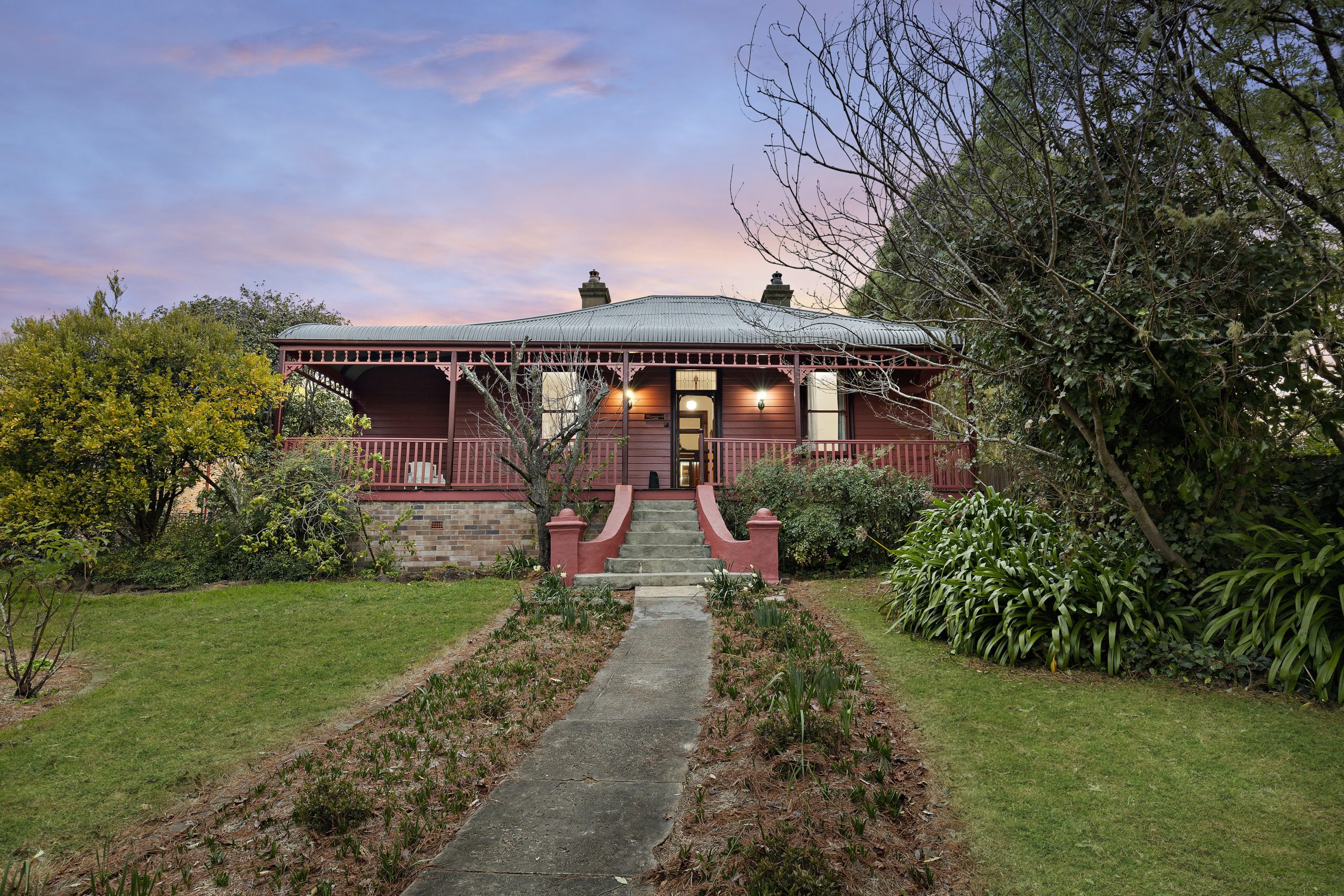WHY THE RENOVATOR’S DELIGHT HAS DONE ITS DASH
Skills shortages and rising costs take their toll on buyer interest
Australia’s love affair with the renovator’s delight could be on the rocks as skyrocketing building costs and the country’s biggest tradie shortage in decades take hold.
Just 12 months ago comparison site Finder conducted a homebuyer survey which revealed four in five purchasers wanted to buy to renovate as housing supply was low and property prices were soaring. But what a difference a year makes.
For more stories like this, order your copy of Kanebridge Quarterly magazine here
Today, building materials are scarce and the most acute shortage of building professionals is for bricklayers, carpenters and roofers. In March, Jobs board Seek tracked the highest number of job advertisements in its 25-year history with the Trades and Services industry driving most of the available jobs. The shortfall may be a result of the Federal Government’s HomeBuilder scheme, which injected more than 130,000 new builds or large renovations into the market, coupled with a drought of foreign skilled workers brought on by two years of closed borders.
So unless buyers have a trade under their own tool belt or a personal pipeline to products then renovating needs to be a long term goal with an elastic budget.
As a result, daggy and dated homes are proving less popular. But for patient purchasers who are happy to put renovations on ice, this changed climate is translating to more bargaining power.
“Good things do come to those who wait and this is probably the most favourable buyer’s market I’ve been in for a few years,” said Sydney-based buyer’s agent Michelle May. “But a lot of buyers are unable to see potential in older homes. “With our clients we sometimes have to convince them to have a look at these places because often they’re not actually that bad.”
She says many buyers have become accustomed to seeing properties online that look amazing.
“They’re styled to within an inch of their lives, there are gorgeous people with their dogs in the images and you can almost smell the Aesop candles. It’s like you’re flicking through an interiors magazine.”
May explained that anything on the market which hasn’t been styled, is perhaps a deceased estate with a decades-old kitchen or bathroom is being overlooked by many buyers.
“I say to my clients ‘If this had been styled by professionals you’d have wanted to look, whereas you’re quickly dismissing it.’ But maybe it’s actually in a great location and the bones are really good. As long as you’re willing to put up with it for a couple of years and ride out this market recalibration, you could actually do really well.”
Home stager and interior designer Kyara Coakes, founder of The Property Stylist, says selling agents are telling her listings in need of significant work are not attracting much attention, opening the window for savvy buyers looking to negotiate.
“Agents are coming to me because they’re finding almost no one’s even looking at them,” Coakes says. “Some of the agents are saying they’re only getting one or two people per inspection but fully renovated or styled properties are still selling within two weeks, even in a quieter market. It’s like demand has just completely changed.
“For the past 10 years – well before COVID – people were definitely wanting to put their own stamp on a property, but that’s definitely not the case anymore.”
Unsurprisingly, May says the popularity of reality TV shows such as The Block, House Rules and Selling Houses Australia have all contributed to the demand for renovator’s delights over the past decade. Before the construction crisis, she said many renovators who didn’t do their homework found themselves buying a money pit. Now, however, she warns the gamble could be even greater.
“You always get first-home buyers, or inexperienced buyers, who overestimate their own DIY skills and underestimate the cost of trades – even prior to COVID and the import crisis,” May says. “I feel it’s our job to take the rose-tinted glasses off for those clients.
“We’ve renovated and flipped so many properties and it’s not as easy as it looks on The Block.”
Building woes have even hammered the successful reality show with producers of The Block 2022 struggling to land enough tradespeople and making a last-minute call out via the media to source skilled workers to finish the contestants’ houses.
“People who’ve never renovated before, or have no idea what they’re up against in the first place, don’t really get what this crisis means,” she says. “But people who are in the know, they’re definitely holding off and you see it in the auction results on Saturdays.”
She says when the market was hot, she was bidding against small-to-medium builders who had the economies of scale and the know-how to renovate well.
“There’s not the profit for them now so they’re dropping off,” May says. “On the other hand, properties with everything done are still going gangbusters and are exceeding expectations. It’s clear renovator’s delights have come off the boil.”
Ultimately, while there are opportunities out there for buyers who are willing to wait, May said research and due diligence is still key. She stressed the old real estate adage of buying “the worst house in the best street” might be great in theory, but not always in practice if the downsides of the home are beyond renovating.
“There’s sometimes a good reason why it’s the worst house on the best street,” she suggests. “It could be a very skinny terrace, or the bathroom is way in the back of the house which could be extremely costly to move, or the street behind it has a huge apartment building so you have no privacy.
“Just be mindful that renovating is definitely not for the faint-hearted and in some cases, it should be kept on TV.”
This stylish family home combines a classic palette and finishes with a flexible floorplan
Just 55 minutes from Sydney, make this your creative getaway located in the majestic Hawkesbury region.
As Paris makes its final preparations for the Olympic games, its residents are busy with their own—packing their suitcases, confirming their reservations, and getting out of town.
Worried about the hordes of crowds and overall chaos the Olympics could bring, Parisians are fleeing the city in droves and inundating resort cities around the country. Hotels and holiday rentals in some of France’s most popular vacation destinations—from the French Riviera in the south to the beaches of Normandy in the north—say they are expecting massive crowds this year in advance of the Olympics. The games will run from July 26-Aug. 1.
“It’s already a major holiday season for us, and beyond that, we have the Olympics,” says Stéphane Personeni, general manager of the Lily of the Valley hotel in Saint Tropez. “People began booking early this year.”
Personeni’s hotel typically has no issues filling its rooms each summer—by May of each year, the luxury hotel typically finds itself completely booked out for the months of July and August. But this year, the 53-room hotel began filling up for summer reservations in February.
“We told our regular guests that everything—hotels, apartments, villas—are going to be hard to find this summer,” Personeni says. His neighbours around Saint Tropez say they’re similarly booked up.
As of March, the online marketplace Gens de Confiance (“Trusted People”), saw a 50% increase in reservations from Parisians seeking vacation rentals outside the capital during the Olympics.
Already, August is a popular vacation time for the French. With a minimum of five weeks of vacation mandated by law, many decide to take the entire month off, renting out villas in beachside destinations for longer periods.
But beyond the typical August travel, the Olympics are having a real impact, says Bertille Marchal, a spokesperson for Gens de Confiance.
“We’ve seen nearly three times more reservations for the dates of the Olympics than the following two weeks,” Marchal says. “The increase is definitely linked to the Olympic Games.”

Getty Images
According to the site, the most sought-out vacation destinations are Morbihan and Loire-Atlantique, a seaside region in the northwest; le Var, a coastal area within the southeast of France along the Côte d’Azur; and the island of Corsica in the Mediterranean.
Meanwhile, the Olympics haven’t necessarily been a boon to foreign tourism in the country. Many tourists who might have otherwise come to France are avoiding it this year in favour of other European capitals. In Paris, demand for stays at high-end hotels has collapsed, with bookings down 50% in July compared to last year, according to UMIH Prestige, which represents hotels charging at least €800 ($865) a night for rooms.
Earlier this year, high-end restaurants and concierges said the Olympics might even be an opportunity to score a hard-get-seat at the city’s fine dining.
In the Occitanie region in southwest France, the overall number of reservations this summer hasn’t changed much from last year, says Vincent Gare, president of the regional tourism committee there.
“But looking further at the numbers, we do see an increase in the clientele coming from the Paris region,” Gare told Le Figaro, noting that the increase in reservations has fallen directly on the dates of the Olympic games.
Michel Barré, a retiree living in Paris’s Le Marais neighbourhood, is one of those opting for the beach rather than the opening ceremony. In January, he booked a stay in Normandy for two weeks.
“Even though it’s a major European capital, Paris is still a small city—it’s a massive effort to host all of these events,” Barré says. “The Olympics are going to be a mess.”
More than anything, he just wants some calm after an event-filled summer in Paris, which just before the Olympics experienced the drama of a snap election called by Macron.
“It’s been a hectic summer here,” he says.

AFP via Getty Images
Parisians—Barré included—feel that the city, by over-catering to its tourists, is driving out many residents.
Parts of the Seine—usually one of the most popular summertime hangout spots —have been closed off for weeks as the city installs bleachers and Olympics signage. In certain neighbourhoods, residents will need to scan a QR code with police to access their own apartments. And from the Olympics to Sept. 8, Paris is nearly doubling the price of transit tickets from €2.15 to €4 per ride.
The city’s clear willingness to capitalise on its tourists has motivated some residents to do the same. In March, the number of active Airbnb listings in Paris reached an all-time high as hosts rushed to list their apartments. Listings grew 40% from the same time last year, according to the company.
With their regular clients taking off, Parisian restaurants and merchants are complaining that business is down.
“Are there any Parisians left in Paris?” Alaine Fontaine, president of the restaurant industry association, told the radio station Franceinfo on Sunday. “For the last three weeks, there haven’t been any here.”
Still, for all the talk of those leaving, there are plenty who have decided to stick around.
Jay Swanson, an American expat and YouTuber, can’t imagine leaving during the Olympics—he secured his tickets to see ping pong and volleyball last year. He’s also less concerned about the crowds and road closures than others, having just put together a series of videos explaining how to navigate Paris during the games.
“It’s been 100 years since the Games came to Paris; when else will we get a chance to host the world like this?” Swanson says. “So many Parisians are leaving and tourism is down, so not only will it be quiet but the only people left will be here for a party.”
This stylish family home combines a classic palette and finishes with a flexible floorplan
Just 55 minutes from Sydney, make this your creative getaway located in the majestic Hawkesbury region.


















